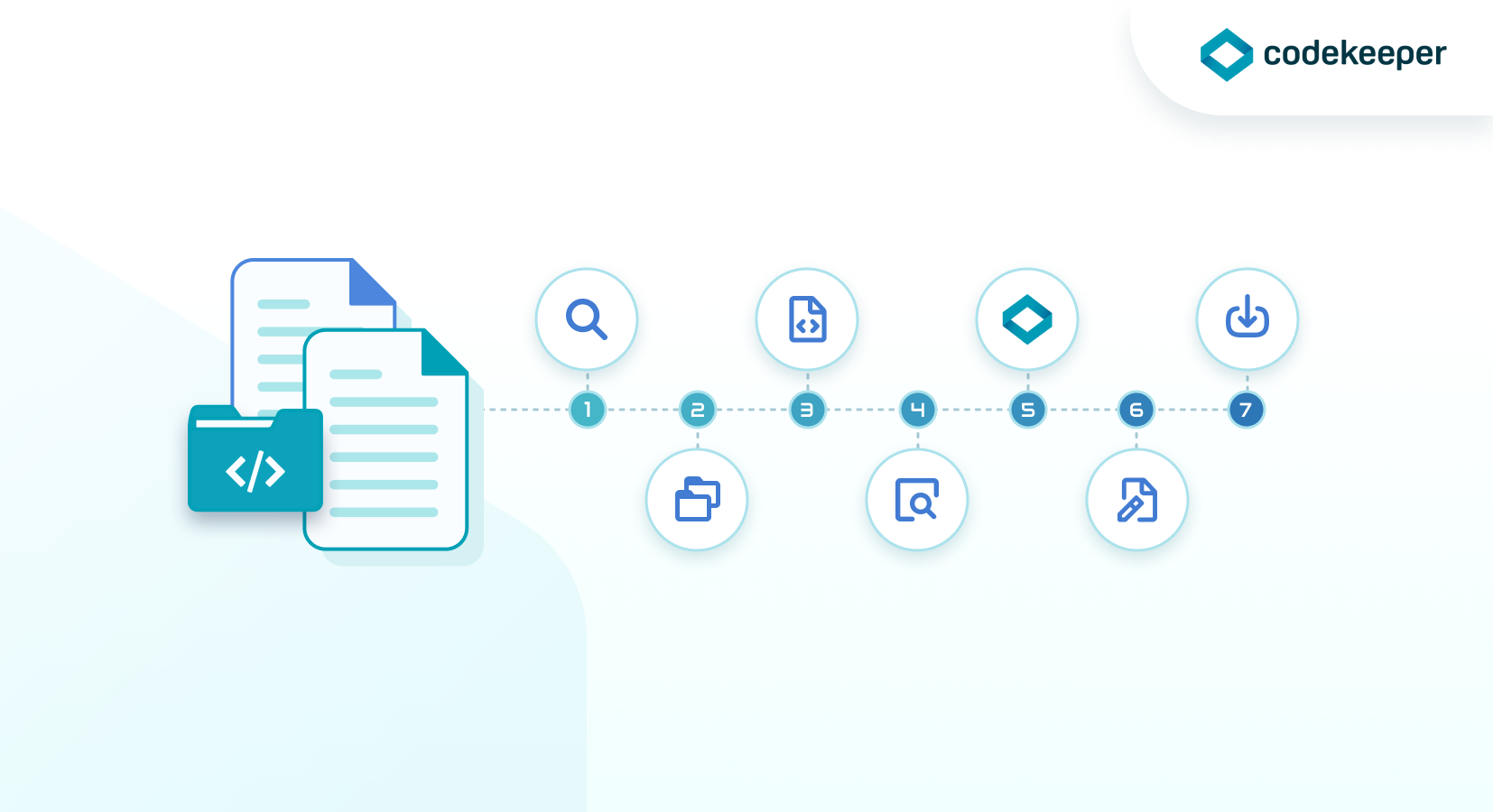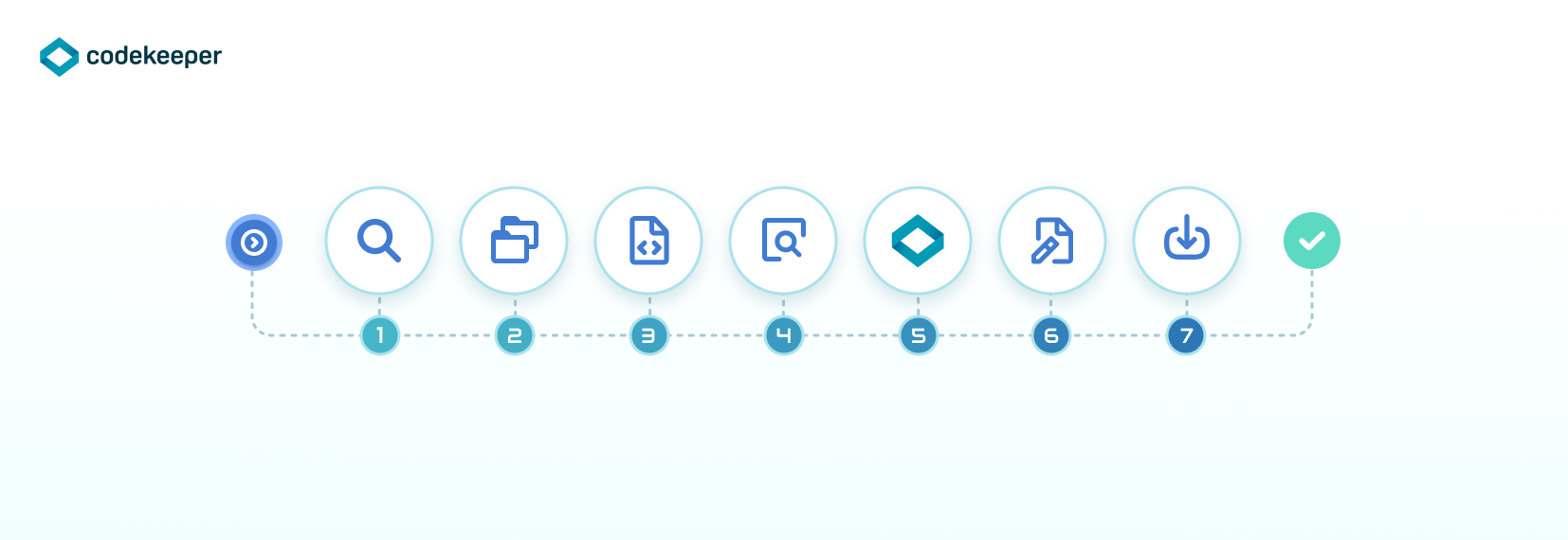A Step-by-Step Guide to Preparing Source Code for Software Escrow
Protect your software investment: Learn how to prepare your source code for escrow in 7 simple steps.

By Jo Rust
Software escrow is a widely used practice that safeguards the intellectual property of software developers while ensuring the rights and interests of software users. In a software escrow arrangement, a neutral third-party (the escrow agent like Codekeeper) holds the source code and related materials, releasing them under predefined conditions. To ensure that the escrow process is effective and beneficial for all parties, it is essential to properly prepare your source code for escrow. In this article, we will provide a step-by-step guide to help you prepare your source code for software escrow.
Step 1: Identify the Components of Your Software
Begin by identifying all the components of your software that need to be included in the escrow deposit. This may include the following:
- Source code
- Executable files
- Build scripts
- Configuration files
- Libraries and dependencies
- Documentation
- Test scripts and test data
- Licensing information
Ensure that you have a complete and comprehensive list of all the components, as this will make the subsequent steps easier to follow.
Step 2: Organize Your Source Code and Files
Organize your source code and related files in a clear and logical manner. This may involve creating a directory structure that mirrors your software's architecture or using a standard organizational scheme that is widely recognized in your industry. Proper organization makes it easier for the escrow agent and beneficiaries to navigate and understand the source code, ensuring that the escrow serves its intended purpose.

Step 3: Document Your Software
Thorough documentation is essential when preparing source code for escrow. It ensures that the beneficiaries can easily understand, maintain, and modify the software in case the escrow conditions are met. The documentation should include:
- A high-level overview of the software's architecture
- Descriptions of the primary components and their functions
- A list of dependencies and libraries
- A detailed guide on how to build, install, and configure the software
- Instructions for running tests and interpreting test results
- Any known issues, bugs, or limitations
- A changelog that tracks updates and revisions
Step 4: Verify the Completeness of Your Deposit
Before submitting your source code and related materials to the escrow, double-check that your deposit is complete and contains everything necessary for the beneficiaries to build, install, and use the software. This may involve running a build process using the files and instructions provided in the escrow deposit or having a third party review the materials to ensure their completeness.
Step 5: Choose a Suitable Escrow Agent
Select a reputable and experienced escrow agent who is well-versed in handling software escrow arrangements, like Codekeeper who has been providing escrow services to some of the largest companies in the world for close to a decade. The escrow agent should provide a secure storage environment and have a proven track record of effectively managing the release of source code under predetermined conditions.
Step 6: Create an Escrow Agreement
Work with your escrow agent and the beneficiary to draft a clear and comprehensive escrow agreement. The agreement should outline the following:
- The parties involved (developer, beneficiary, and escrow agent)
- The specific conditions under which the source code will be released
- The process for verifying and updating the escrow deposit
- The fees and payment terms for the escrow agent's services
- The duration of the escrow agreement and any renewal or termination provisions
With Codekeeper you get a fully customizable escrow agreement as part of your subscription.
Step 7: Deposit the Source Code with Codekeeper
Once the escrow agreement is in place, securely transfer your source code and related materials to the escrow agent. This may involve using encrypted file transfer methods or physically delivering the materials on secure storage media. Our online application allows for automated integrations, making the depositing of escrow a quick and simple exercise.
Properly preparing your source code for software escrow is a critical step in ensuring that the arrangement benefits all parties involved. By following this step-by-step guide, you can create an organized, well-documented, and complete escrow deposit that will provide peace of mind to both your organization and your software users. Remember, investing time and effort in the preparation process will help guarantee the effectiveness of the escrow arrangement, protect your intellectual property, and maintain the trust of your clients and partners in the long run. With a well-executed software escrow, you can build strong relationships and a solid reputation in your industry.
Our experts will be happy to discuss any questions you might have surrounding source code or software escrow. Simply click on the button below to book a demo call when it suits you.




